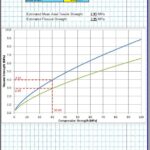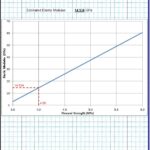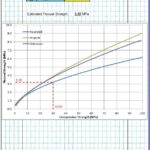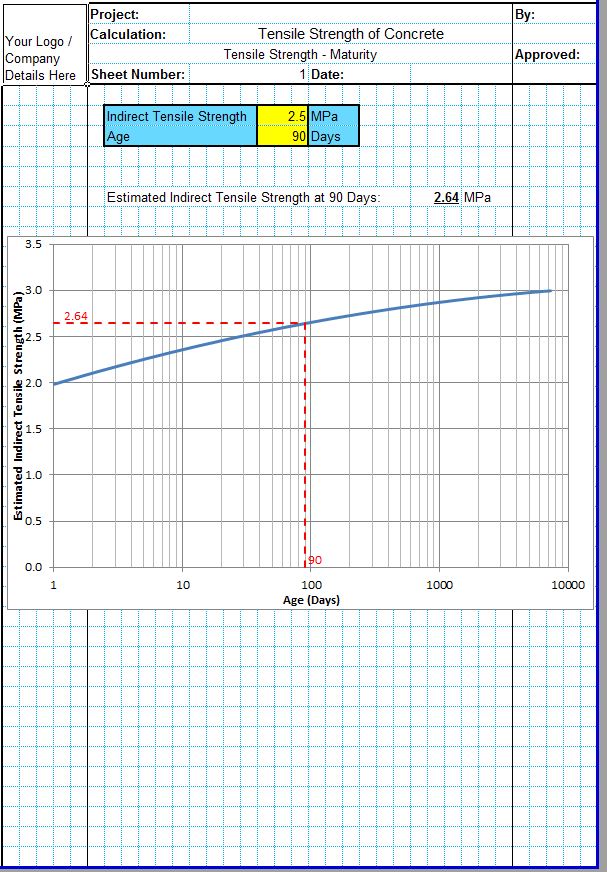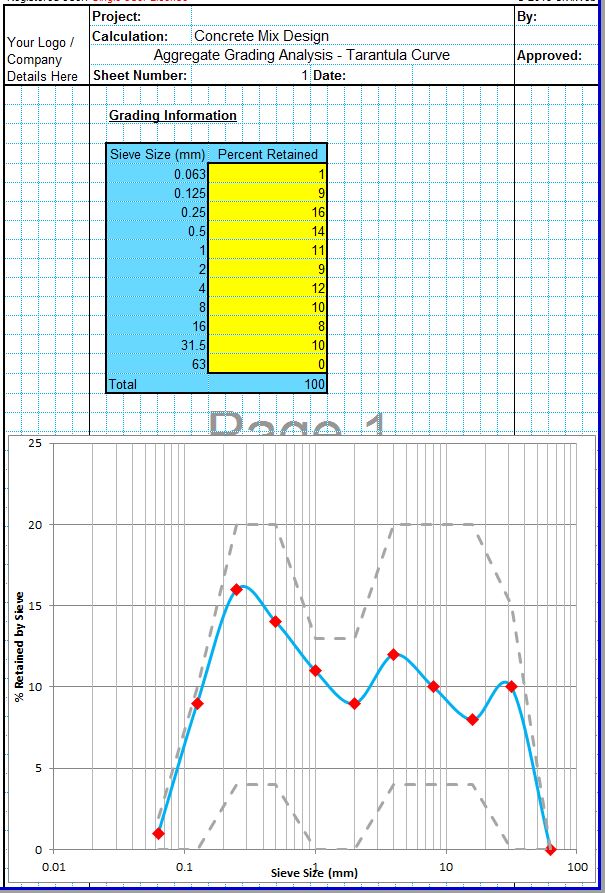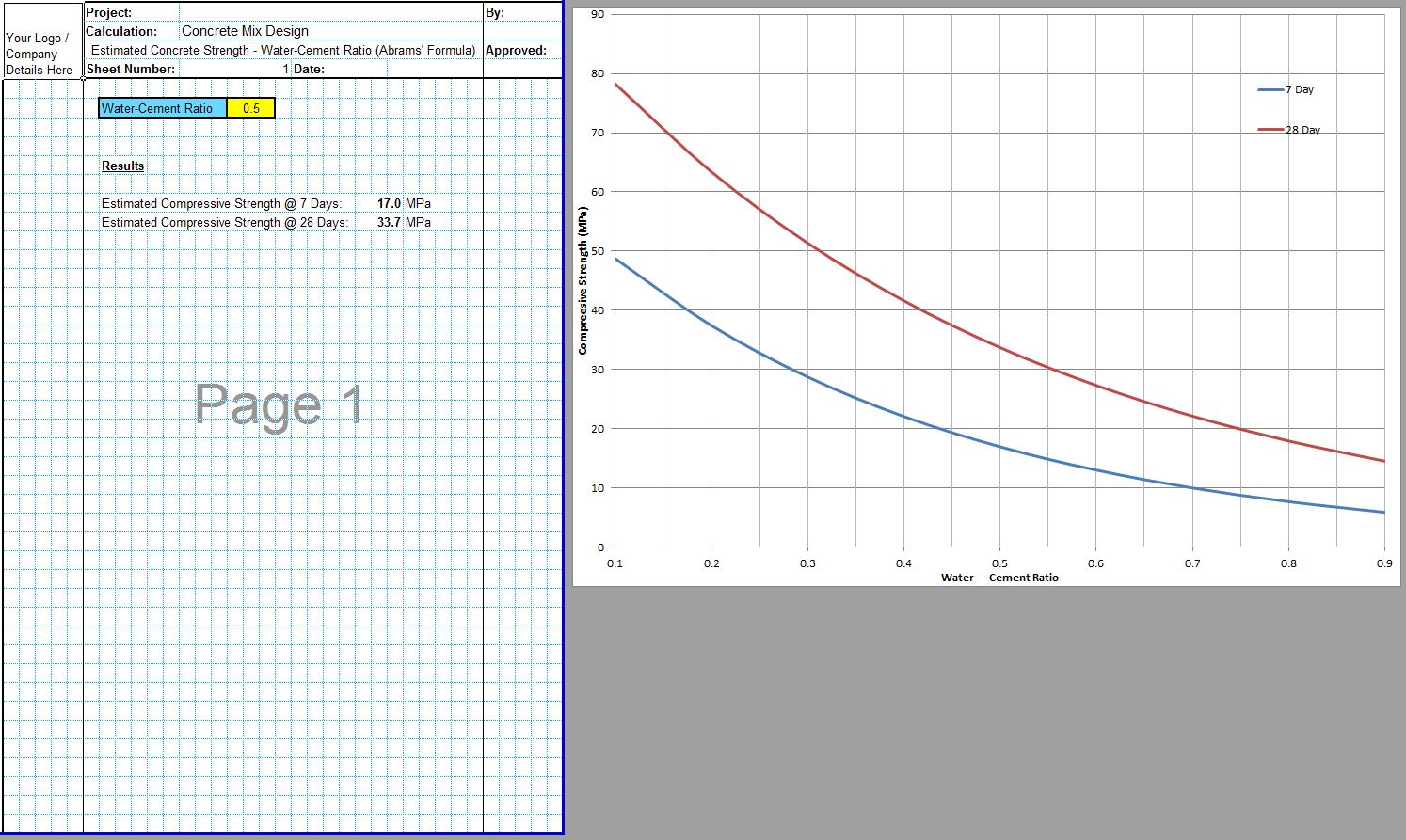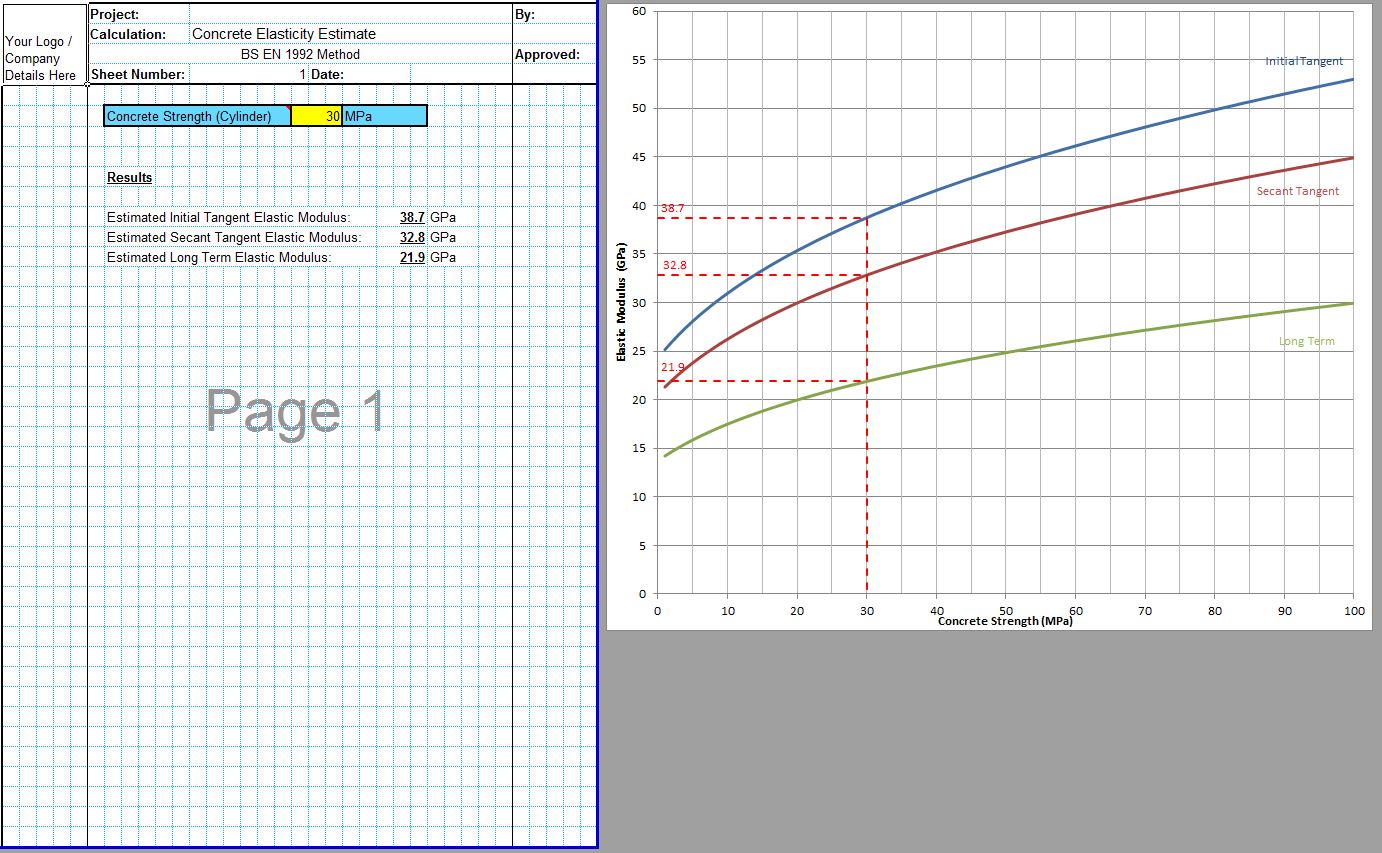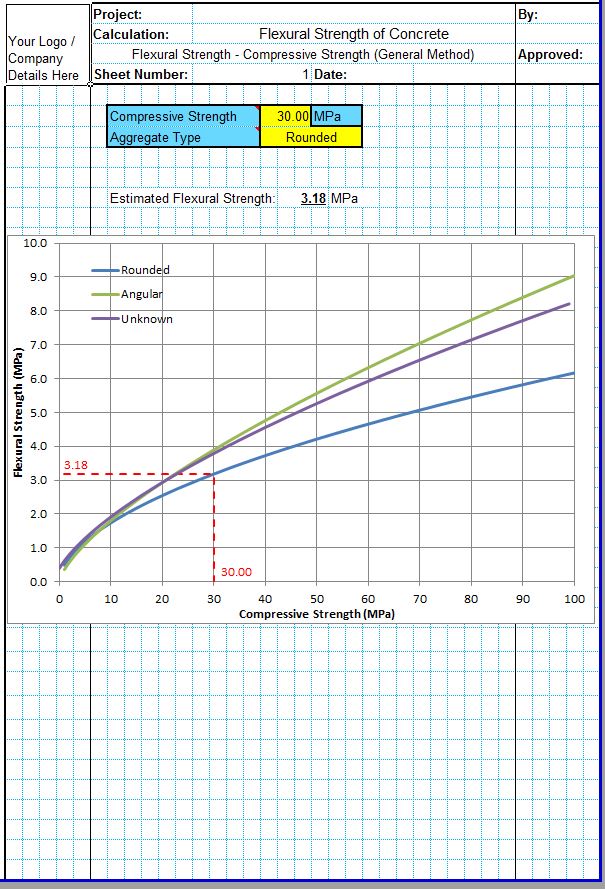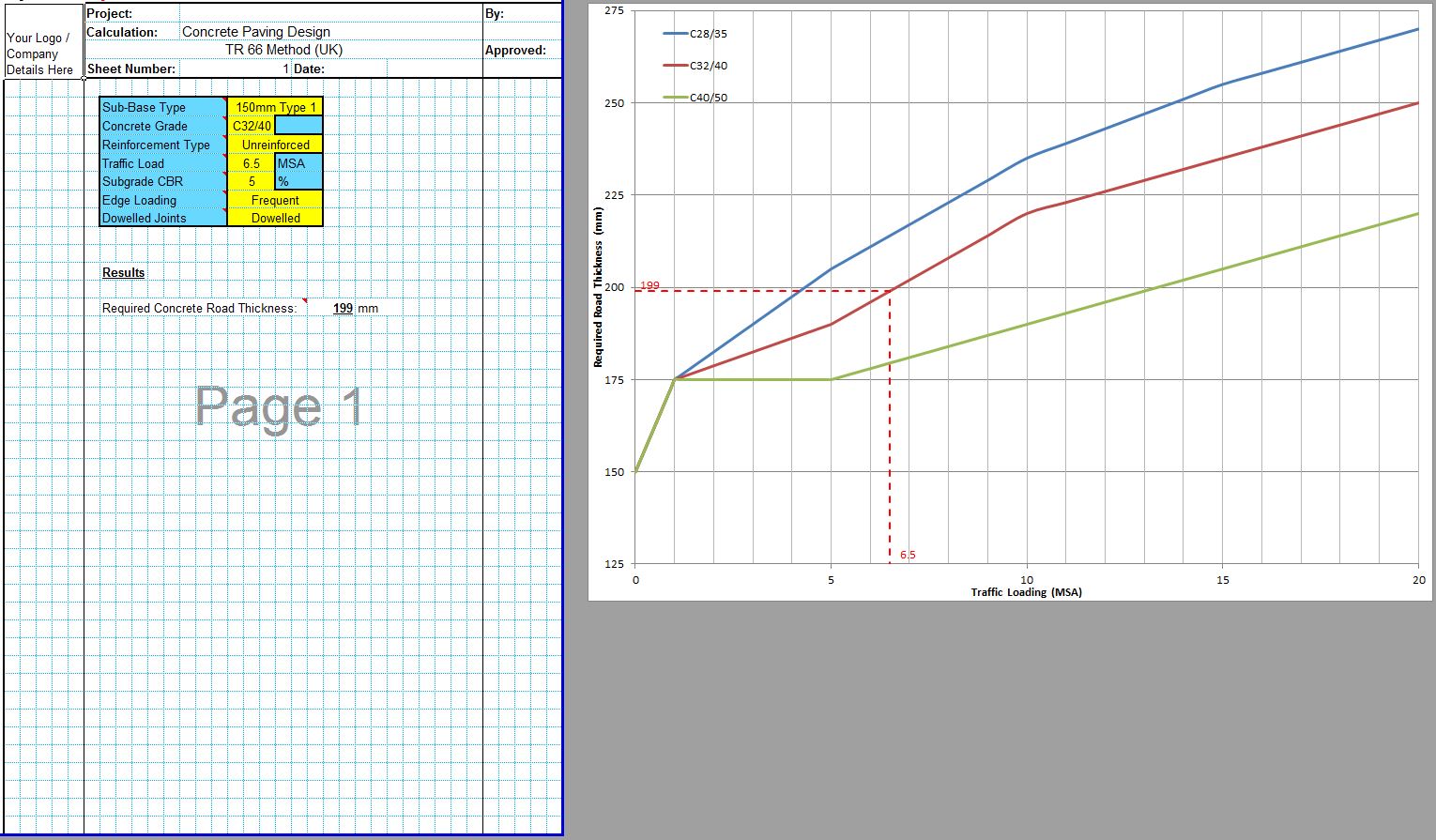In many cases it is necessary to complete a compressive strength to flexural strength conversion. This is particularly common in the design and specification of concrete pavements where flexural strengths are critical while compressive strengths are often specified. For quality control purposes a reliable compressive strength to flexural strength conversion is required in order to ensure that the concrete satisfies the specification.
The CivilWeb Compressive Strength to Flexural Strength Conversion spreadsheet is included in the CivilWeb Flexural Strength of Concrete suite of spreadsheets. It uses two commonly used general correlations to convert concrete compressive and flexural strength. This useful spreadsheet can be used to convert concrete cube test results from compressive strength to flexural strength to check whether the concrete used satisfies the specification.
The CivilWeb Flexural Strength of Concrete suite of spreadsheets is available for purchase at the bottom of this page for only £5. Alternatively the spreadsheet is included in the full Concrete Properties Suite which includes many more tools for only £10. The spreadsheet is also included for free with the CivilWeb Rigid Pavement Design suite.
Factors Affecting the Flexural Strength of Concrete
The factors affecting the flexural strength of the concrete are generally similar to those affecting the compressive strength. Further information can be found in our Compressive Strength of Concrete post. Flexural strength is however much more dependant on the type and shape of the aggregates used. Angular crushed aggregates achieve much greater flexural strength than rounded marine aggregates. Further information on this is included in our Flexural Strength of Concrete post.
Flexural Strength Testing of Concrete
The testing of flexural strength in concrete is generally undertaken using a third point flexural strength test on a beam of concrete. This is much more difficult and less accurate than the equivalent concrete cube test, which is why it is common to test the compressive strength and then convert to flexural strength when checking the concrete's compliance with the specification. Further details on strength testing of concrete can be found in our Concrete Cube Test and Flexural Test posts.
Compressive Strength to Flexural Strength Conversion
The simplest and most commonly applied method of quality control for concrete pavements is to test compressive strength and then use this as an indirect measure of the flexural strength. While this relationship will vary from mix to mix, there have been a number of attempts to derive a flexural strength to compressive strength converter equation.
For CEM 1 type cements a very general relationship has often been applied;
This provides only the most basic correlation between flexural strength and compressive strength and should not be used for design purposes. The value of the multiplier can range between 0.58 and 0.91 depending on the aggregate type and other mix properties.
A more useful correlations equation for the compressive and flexural strength of concrete is shown below. Similar equations can used to allow for angular crushed rock aggregates or rounded marine aggregates as shown below. These are taken from the work of Croney & Croney.
The current 4th edition of TR 34 includes the same method of correlation as BS EN 1992. This method converts the compressive strength to the Mean Axial Tensile Strength, then converts this to flexural strength and includes an adjustment for the depth of the slab. These equations are shown below.
fck = Characteristic Concrete Compressive Strength (Cylinder)
h = Depth of Slab
The two methods agree reasonably well for concrete strengths and slab thicknesses typically used for concrete pavements. A calculator tool to apply either of these methods is included in the CivilWeb Compressive Strength to Flexural Strength Conversion spreadsheet.
Caution should always be exercised when using general correlations such as these for design work. Where flexural strength is critical to the design a correlation specific to the concrete mix should be developed from testing and this relationship used for the specification and quality control.
Flexural Strength Correlation with Elasticity
As there is a correlation between the compressive and flexural strength of concrete and a correlation between compressive strength and the modulus of elasticity of the concrete, there must also be a reasonably accurate correlation between flexural strength and elasticity.
Where the modulus of elasticity of the concrete is required to complete a design there is a correlation equation relating flexural strength with the modulus of elasticity, shown below.
Sc = Flexural Strength (psi)
Ec = Elastic Modulus (psi)
A calculator tool is included in the CivilWeb Flexural Strength of Concrete suite of spreadsheets with this equation converted to metric units. As with any general correlations this should be used with caution. Where an accurate elasticity value is required this should be determined from testing. Further information on the elasticity of concrete is included in our Modulus of Elasticity of Concrete post.
CivilWeb Compressive Strength to Flexural Strength Conversion Spreadsheet
The CivilWeb Flexural Strength of Concrete suite of spreadsheets includes the two methods described above, as well as the modulus of elasticity to flexural strength converter. Buy now for only £5.
Our full Concrete Properties Suite of spreadsheets is available for only £10.
Download Free Trial Version
To try out a fully functional free trail version of this software, please enter your email address below to sign up to our newsletter.
